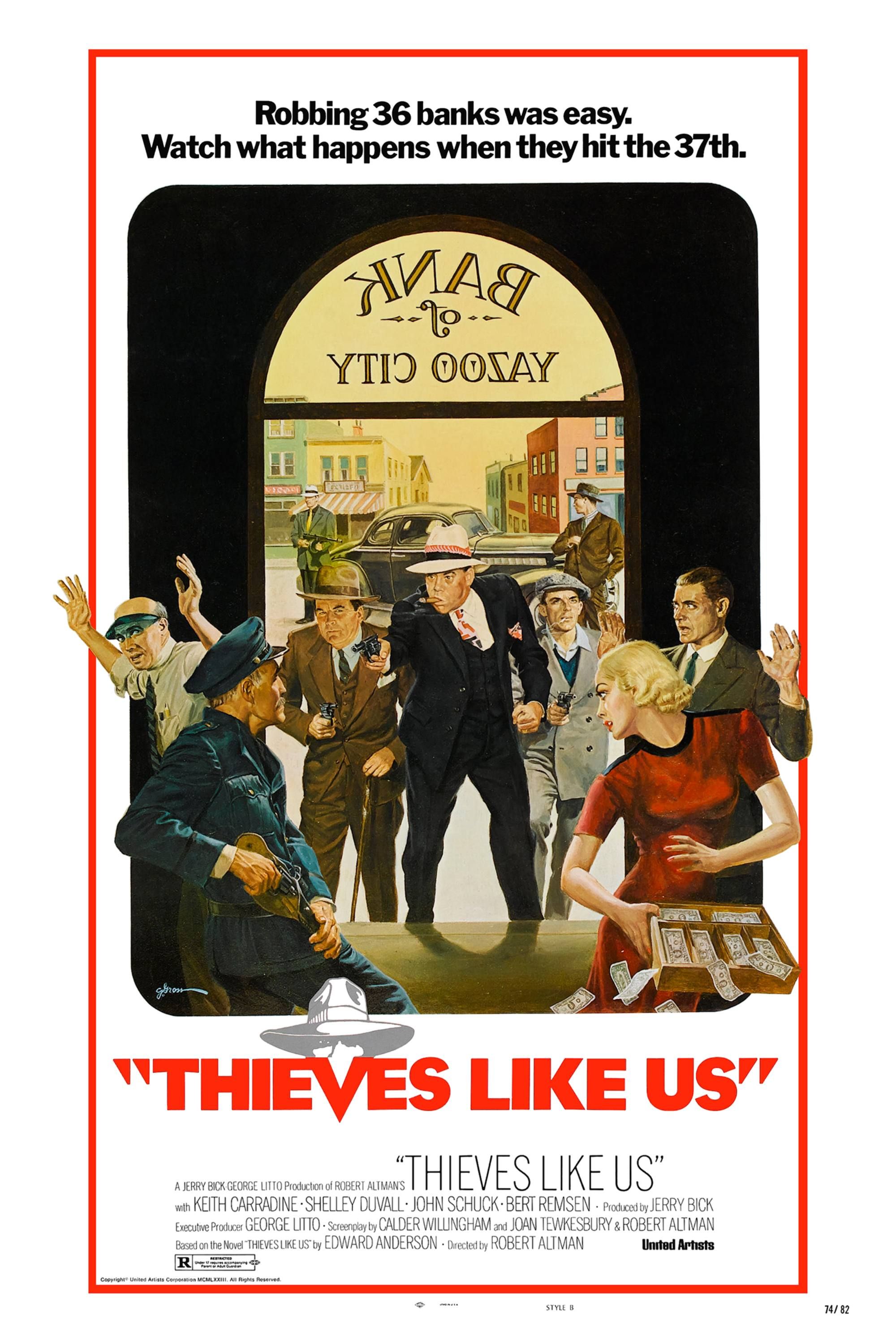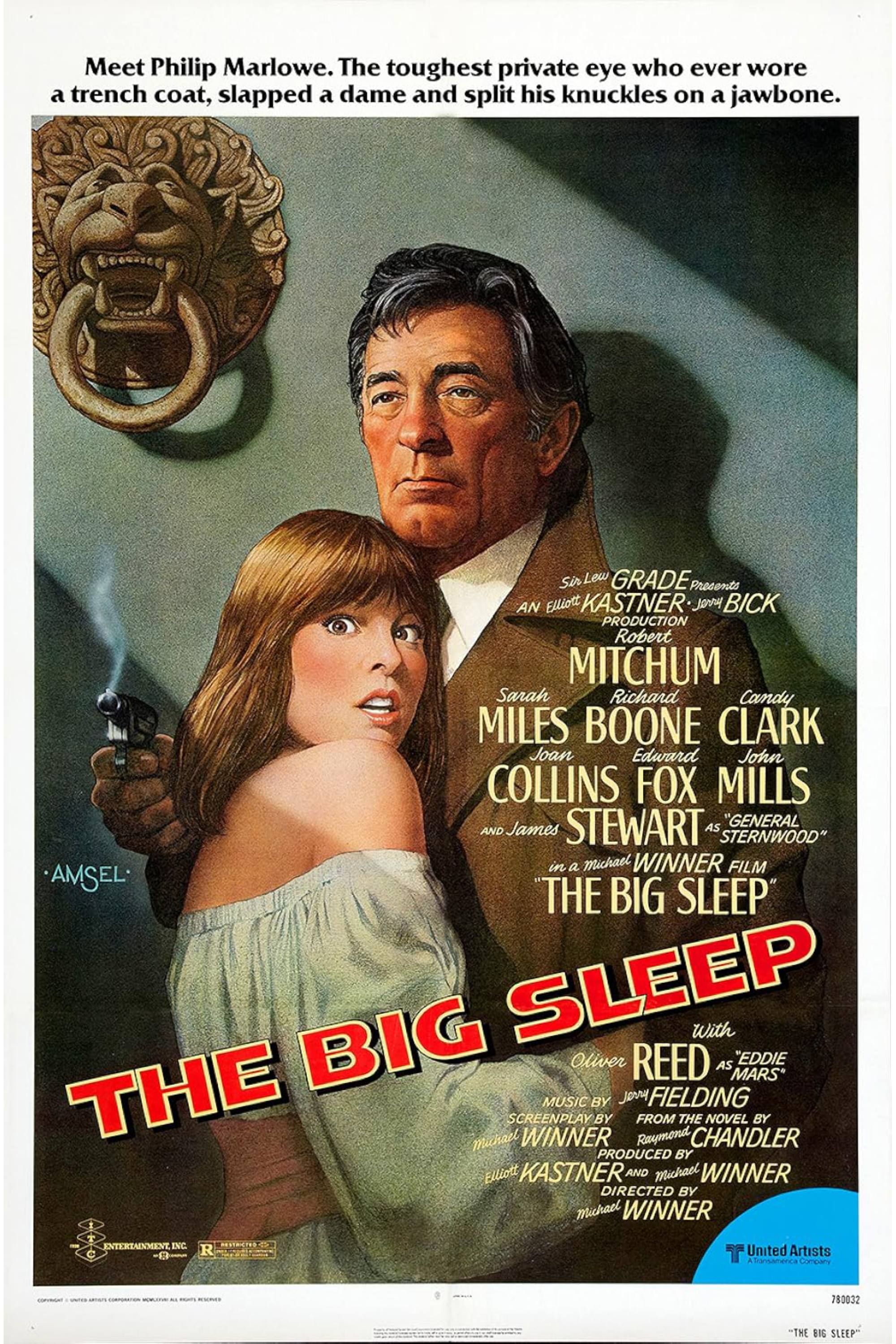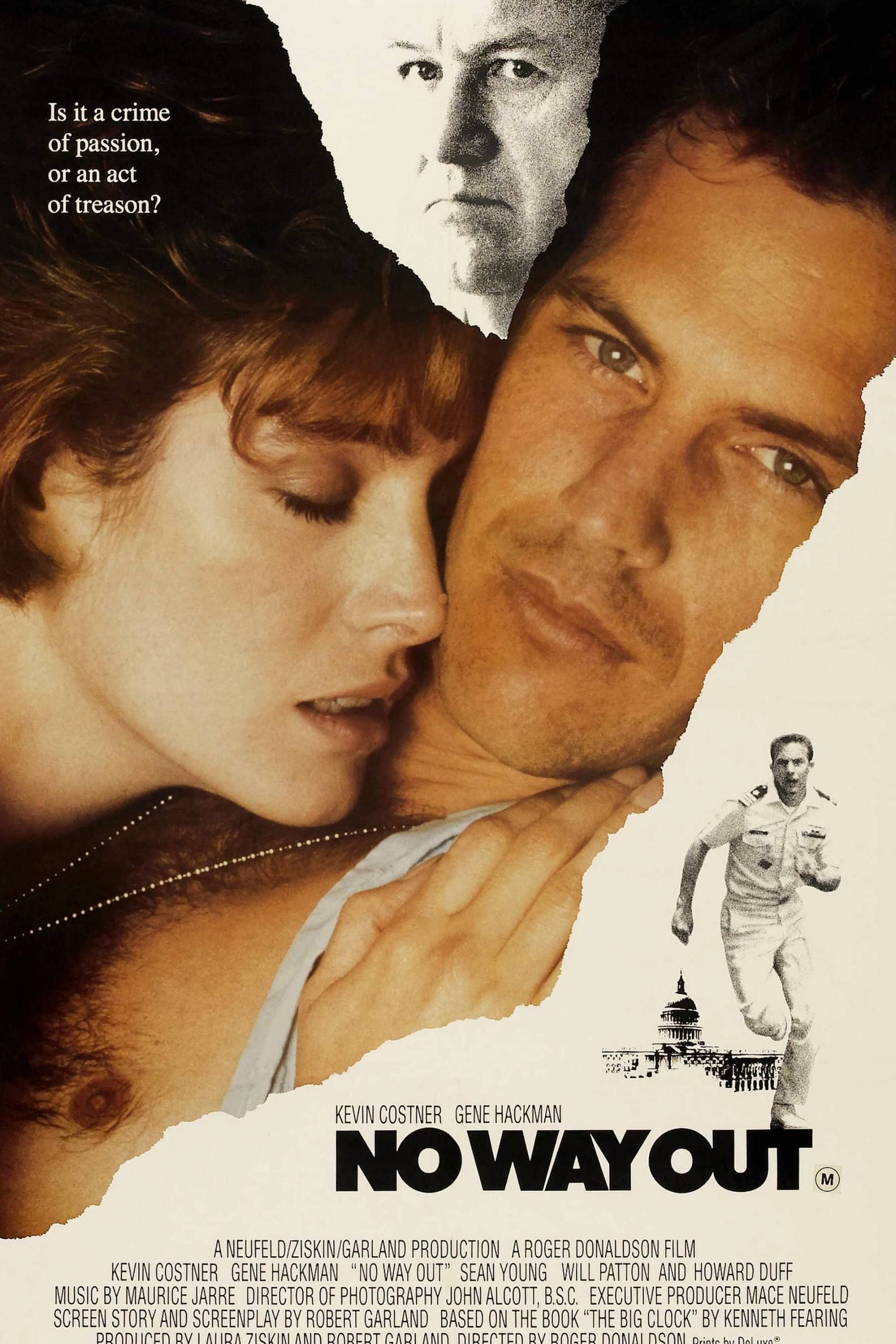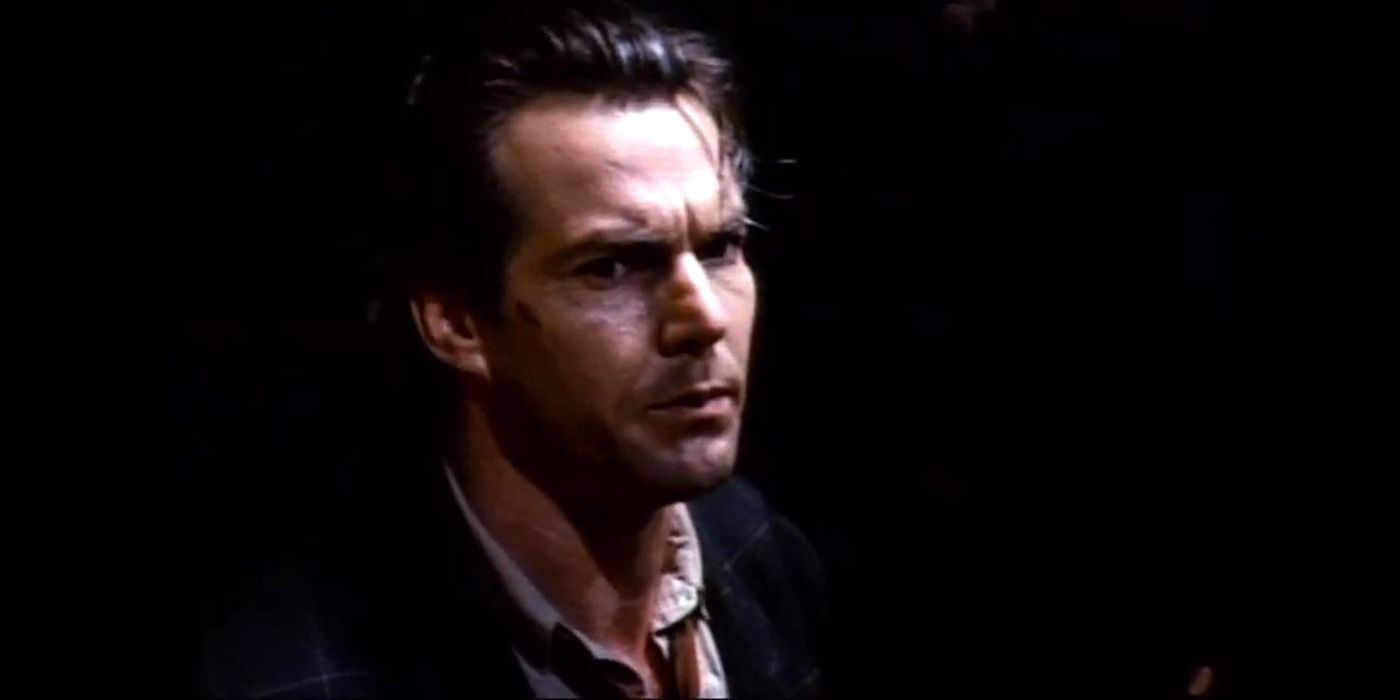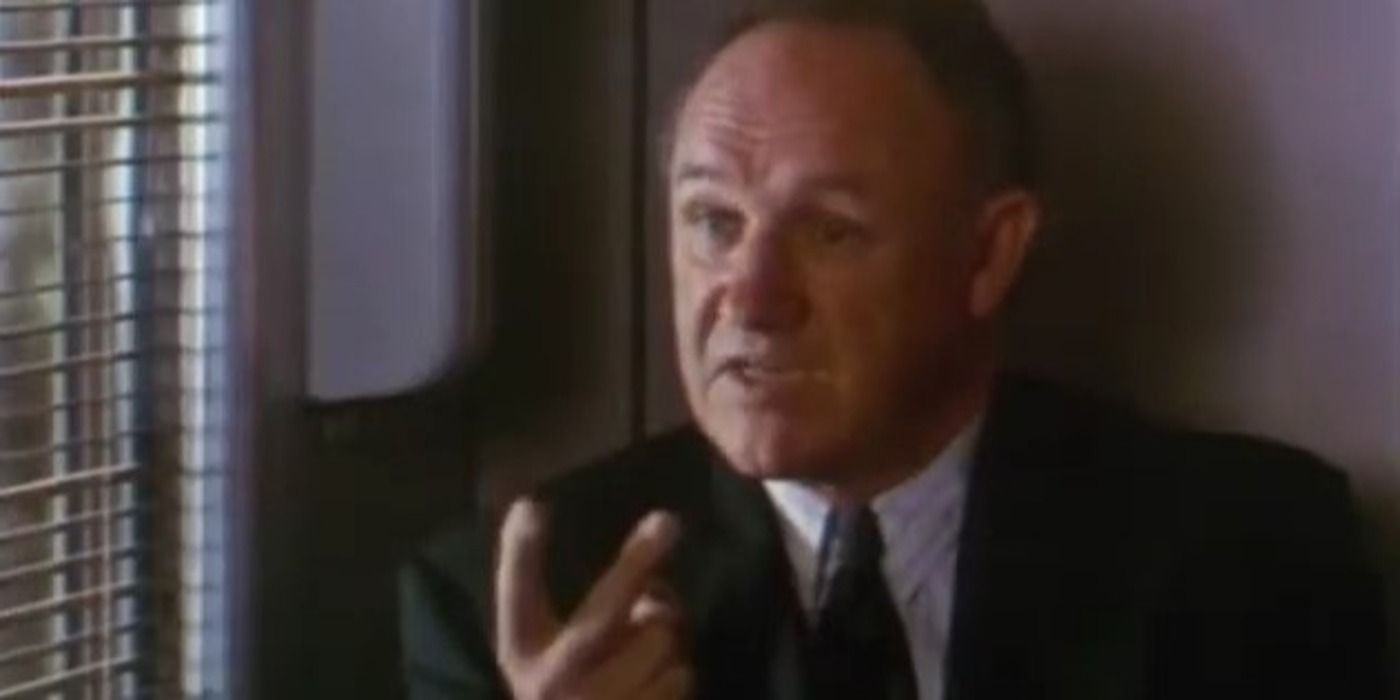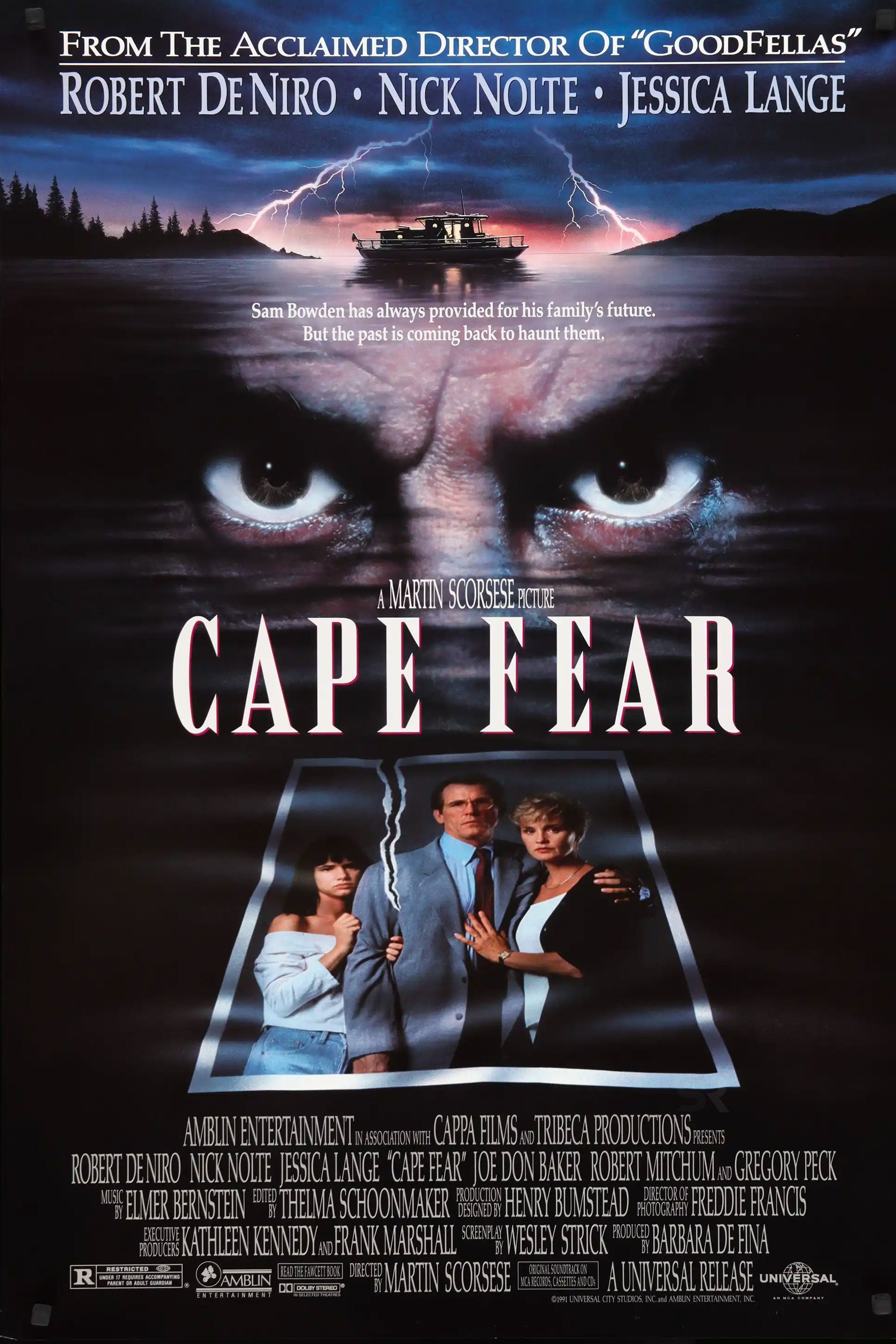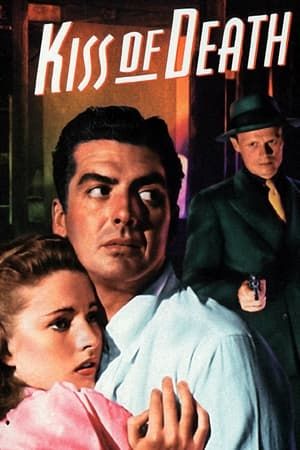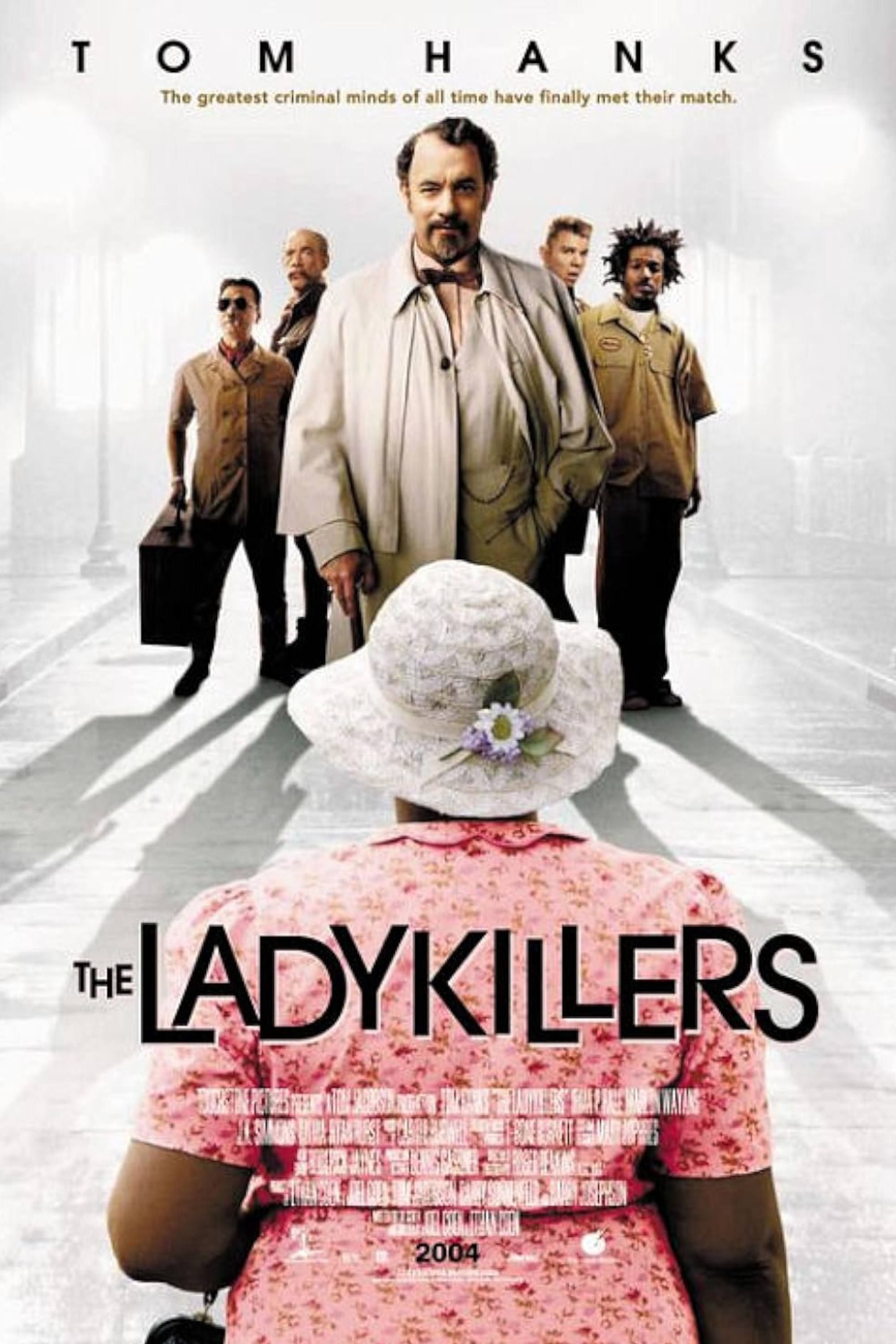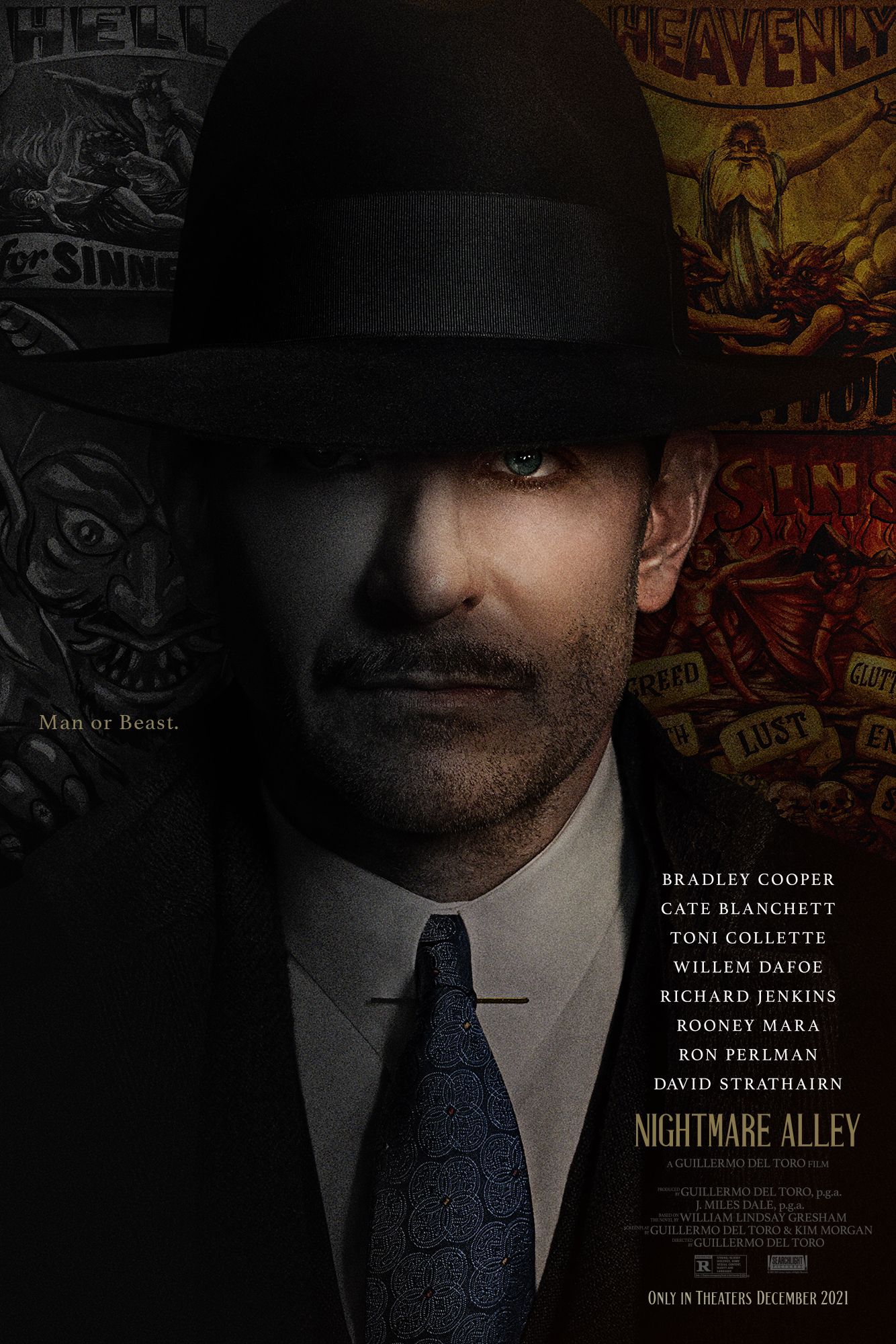Summary
- Many classic film noirs have been successfully remade for modern audiences, adding new elements to the beloved stories.
- Through remakes like “The Killers” and “Cape Fear,” filmmakers have found ways to update and intensify the dark themes of film noir.
- The 2021 version of “Nightmare Alley” is a visually stunning and gripping remake that pays tribute to the original film noir classic.
Film noir may have had its heyday during the 1940s and 1950s, but since then, many genre classics have been remade for modern viewers. Through dark, gritty, and incredibly creative concepts, film noirs enthralled audiences with their sinister portrayals of urban environments, shocking criminal happenings, and alluring femme fatales, meaning it’s no surprise that filmmakers want to revisit these stories time and time again. While it’s often hard to outdo the original, plenty of remakes of classic noirs were worthy follow-ups that added something new to the previously told story.
The best film noirs of all time included some of the greatest movies ever made, which meant it was only enviable that some of them would be remade. In some cases, classic film noirs have been remade numerous times as characters such as The Big Sleep’s iconic Detective Philip Marlowe have been a consistent source of material for Hollywood directors. While the genre’s classic period may be long over, film noirs have remained popular through endless remakes and reimaginings of acclaimed hardboiled stories.
10 The Killers (1964)
Remake of: The Killers (1947)
The iconic Ernest Hemingway story The Killers has been adapted for the screen several times, most notably with Burt Lancaster in 1947 and again in 1964 with Lee Marvin and Ronald Reagan in his final film role before entering politics. This story was about two hitmen who, after their victim didn’t attempt to escape being murdered, tried to uncover the mystery of who ordered the hit and what their intentions were. The original version was a film noir classic that pleased even Hemingway himself, who was famously often unimpressed with adaptations of his work.
Ernest Hemingway said of the 1947 version of
The Killers
: ”
It is a good picture and the only good picture ever made of a story of mine
,” (via
Far Out
.)
The 1964 version of The Killers was also an impressive success and a worthy remake that stood as one of Lee Marvin’s best films. This version of The Killers outdid its 1940s counterpart in many ways, as it was a more streamlined and vivid adaptation of Hemingway’s story. However, both versions were true must-watch classics that showcased the appeal of the film noir genre.
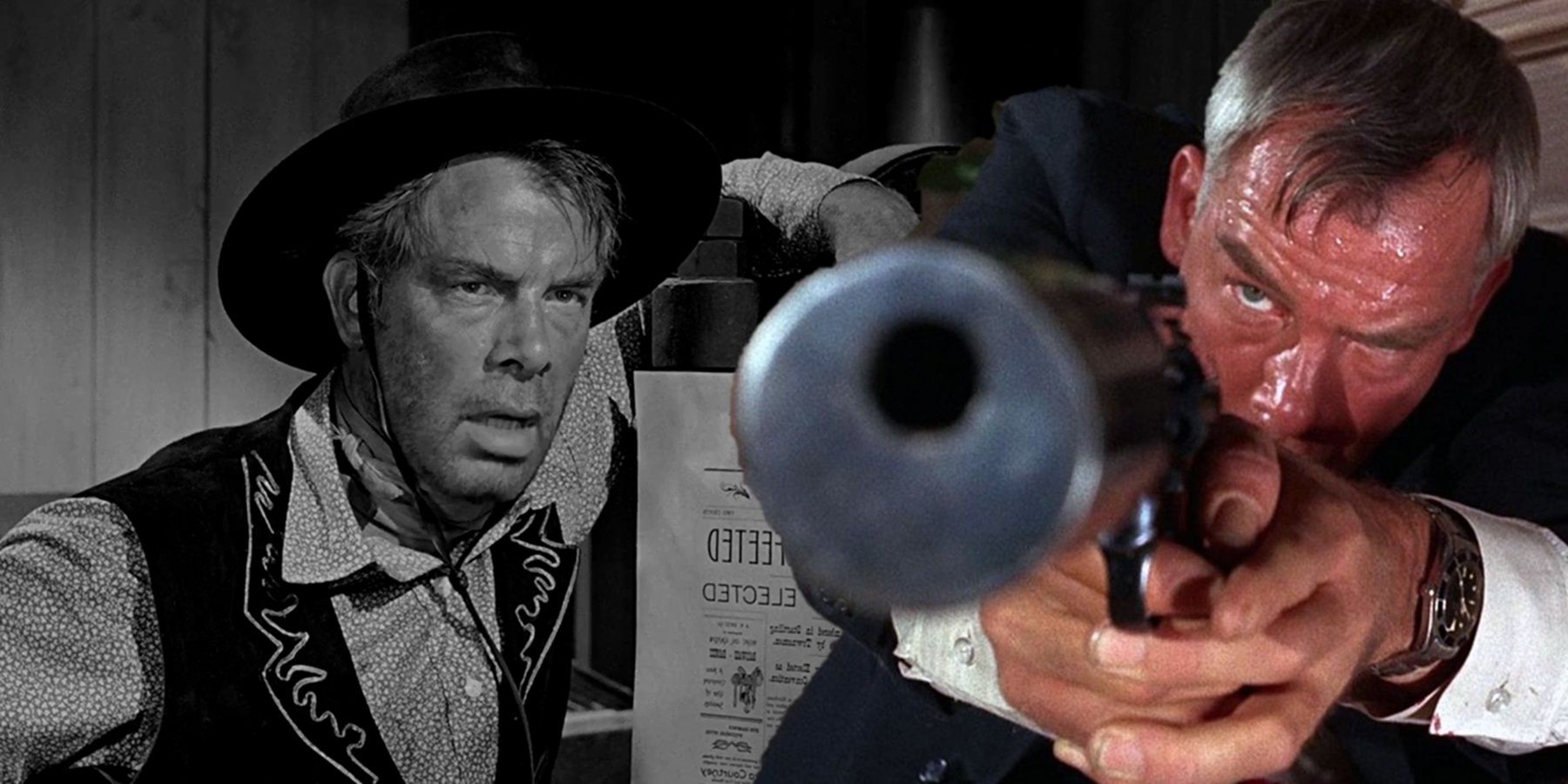
Related
12 Best Lee Marvin Movies Ranked
From Point Blank to The Dirty Dozen to The Man Who Shot Liberty Valance, there are a bunch of great Lee Marvin movies for fans to enjoy.
9 Thieves Like Us (1974)
Remake of: They Live by Night (1948)
The 1940s was the true heyday of film noir, which featured classics of the genre, such as Nicolas Ray’s They Live By Night. As one of the very first “couple on the run” movies, it acted as a forerunner to later classics like Bonnie and Cydle or Terrence Malick’s Badlands. While this film noir may have inspired subsequent films, it was also directly remade by the New Hollywood auteur Robert Altman as Thieves Like Us in a version that retained the title of Edward Anderson’s original 1937 novel.
Thieves Like Us was a worthy remake that featured one of the late Shelley Duvall’s best movies, where she played the garageman’s daughter Keechie, who fell in love with the small-time bank robber Bowie (Keith Carradine.) A story of crime and romance, Thieves Like Us featured two men who broke out of prison and restarted their criminal ways by robbing banks across the Depression-era American South. With a solid script and story, Altman beautifully captured the intensity of 1930s America with powerful visuals and a unique sense of style.
8 The Big Sleep (1978)
Remake of: The Big Sleep (1946)
While it was never going to live to the timeless appeal of Humphrey Bogart’s definitive performance as Detective Philip Marlowe, the 1978 remake of The Big Sleep had a lot going for it. As Robert Mitchum’s second time portraying Detective Marlowe, following Farewell, My Lovely in 1975, this marked the only time an actor had played the character more than once. With a story moved from Los Angeles to London, this more modern adaptation was able to overtly address the themes of homosexuality and pornography from Raymond Chandler’s original novel that had only been subtly hinted at in the 1940s version.
Bogart was always going to be a tough act to follow, and it’s impossible not to compare Mitchum to this timeless portrayal, but he gave a strong performance as the hardboiled detective. What’s most impressive about this updated version of The Big Sleep was how visually stunning it looked as it captured the seedy underbelly of 1970s London. Sadly, without Bogart and Bacall at the helm, The Big Sleep was always going to come in second place, but it’s still definitely worth checking out for lovers of Philip Marlowe movies.
7 No Way Out (1987)
Remake of: The Big Clock (1948)
The acclaimed film noir The Big Clock was remade as No Way Out in 1987, which updated the events of the United States Department of Defense in Washington, D.C., during the Cold War. The Big Clock blended elements of screwball comedy with a noir style as a magazine tycoon committed murder and tried to pin it on an innocent. While No Way Out leaned more into an action thriller premise as contemporary politics were brought into its story of a witchhunt and coverup after a politician killed his mistress.
Director Roger Donaldson put a modern spin on the dense, inquisitive style of the 1940s with a talented cast that included Kevin Cosner and Gene Hackman. With many twists and turns and a clever script, No Way Out was more than a worthy follow-up of The Big Clock, surpassing the original in many ways. It’s no surprise that Cosner became such a major star in the years following No Way Out, as his screen presence and charisma shone through every scene.
6 D.O.A. (1988)
Remake of: D.O.A. (1950)
The 1950 film noir classic D.O.A. told the story of a poisoned man trying to discover the culprit of his own impending murder. With a strong concept and incredible style, Edmond O’Brien gave a strong performance as Frank Bigelow, a protagonist who, in a stunning twist on the genre conventions, was both the detective and victim in his own case. D.O.A. has been remade several times with various updates, such as the 1969 Australian thriller Color Me Dead or even as a modern action movie with Crank in 2006, starring Jason Statham.
However, the most straightforward adaptation was the 1988 movie D.O.A., which saw Dennis Quad star as the college professor Dexter Cornell, who found himself positioned as his personal and professional life fell apart around him. This version of D.O.A. borrowed a lot from its predecessors as it powerfully updated its story for the 1980s. While it does not quite live up to the original, D.O.A. was a witty remake with strong supporting performances from Meg Ryan and Charlotte Rampling.
5 Narrow Margin (1990)
Remake of: The Narrow Margin (1952)
The original film noir The Narrow Margin was an intense game of cat-and-mouse set abroad to train as a gang of mobsters sought to kill a gangster’s widow before she could testify against them. This thrilling classic was then remade as Narrow Margin by director Peter Hyams with Gene Hackman and Anne Archer. Updated for contemporary times, this modern noir remake maintained much of what made the original work so well while also taking influence from other films, such as Alfred Hitchcock’s mysteryThe Lady Vanishes.
Narrow Margin highlighted Hyams’s skill for directing action sequences, keeping the tension high throughout while Archer attempted to evade her would-be assassins on board a train to Vancouver. As pure escapist fun, Narrow Margins was a total success and a worthy remake, but it was always filled with so many tropes and cliches that it failed to truly live up to its potential. Most importantly, Narrow Margin had a unique sense of humor that helped it stand apart from the seriousness of its predecessor.
4 Cape Fear (1991)
Remake of: Cape Fear (1962)
One fascinating remake was Martin Scorsese’s 1991 take on the psychological thriller Cape Fear, where Robert De Niro took up the role of the psychopathic ex-con previously played by Robert Mitchum. As a type of B-movie noir that leaned into elements of horror movies, the original Cape Fear was a trailblazing film that depicted the threat of sexual assault and controversial violence with the backing of a sinister score by Bernard Herrmann. As a remake made almost three decades later, Scorsese’s version was able to lean even more heavily into the darkest sides of Cape Fear’s unnerving story.
While De Niro had played complex and violent characters before, his characterization of the convicted rapist Max Cady showcased new levels of terror. As a big-budget remake with a major Hollywood star, impressive special effects, and strong production values, Scorsese’s Cape Fear was an impressive foray into horror movie territory. This version of Cape Fear was a challenging, dark, and worthy remake of the underappreciated gem of 1960s film noir horror.
3 Kiss Of Death (1995)
Remake of: Kiss of Death (1947)
Henry Hathaway’s Kiss of Death was a 1947 film noir about a criminal who refused to rat on his former partner in crime as he was assured his wife and children would be looked after, but all this changed when his wife died under mysterious circumstances. With shocking intensity, Kiss of Death was a dark noir thriller that received a 1995 loose remake from director Barbet Schroeder. While the remake retained the essential essence of its character dynamics, the 1990s version of Kiss of Death was almost unrecognizable from the original regarding style and aesthetics.
Schroeder’s Kiss of Death was a star-studded crime drama that boasted performances from David Caruso, Samuel L. Jackson, Helen Hunt, and Stanley Tucci. However, the true scene stealer was Nicolas Cage, who, in the same year he took home the Best Actor Oscar for Leaving Las Vegas, was truly at the top of his game. Kiss of Death was worth watching for Cage’s performance as the psychotic mobster Little Junior Brown alone and was a worthy, albeit vastly different, remake.
2 The Ladykillers (2004)
Remake of: The Ladykillers (1955)
The remake of one of Alec Guinness’ best movies, The Ladykillers was an enjoyable retread of the 1955 British film noir Ealing comedy reimagined for an American audience. With Tom Hanks as Professor Goldthwaite Higginson Dorr, this underrated Coen Brothers movie captured the spirit of the original while giving Hanks a chance to showcase a new side to his comedic talents. In the same way that the original saw a gang of criminals exploiting the kindness of an eccentric older lady, this version of The Ladykillers saw the gang misrepresenting themselves as church musicians while they plotted the perfect crime.
The Ladykillers remake was packed with humor as it utilized the absurdity of concept to keep viewers laughing throughout its swift runtime. While The Ladykillers was a mostly faithful remake, it also maintained the Coen Brothers’ unique sense of style as it was littered with off-the-wall characters and a dark sense of humor. It must be admitted that The Ladykillers falls short of the Coen Brothers’ greatest remake, True Grit, but in terms of pure entertainment, this was a worthy rehash of the original.
1 Nightmare Alley (2021)
Remake of: Nightmare Alley (1947)
The 1947 version of Nightmare Alley was truly one of the most unique and interesting film noirs of its era, as it showcased the rise and fall of the seedy traveling carnival’s barker, Stan Carlisle. With a brutally cynical story and an astounding lead performance from Tyrone Power, Nightmare Alley was a box office flop when it was released but gradually built up a reputation as a hidden gem of film noir. As an unappreciated classic, it made sense that Guillermo del Toro revived the story for modern audiences.
Del Toro’s Nightmare Alley was a worthy remake, starring Cate Blanchett and Bradley Cooper in a version that maintained the film noir appeal of the original. However, this version was also imbued with Del Toro’s unique vision and sense of style, as modern special effects allowed him to depict the story with a level of grandeur that was impossible in the 1940s. With vivid colors and existential descent into a world of madness, Nightmare Alley was an impressive cinematic spectacle and a loving tribute to the original.
Source: Far Out



